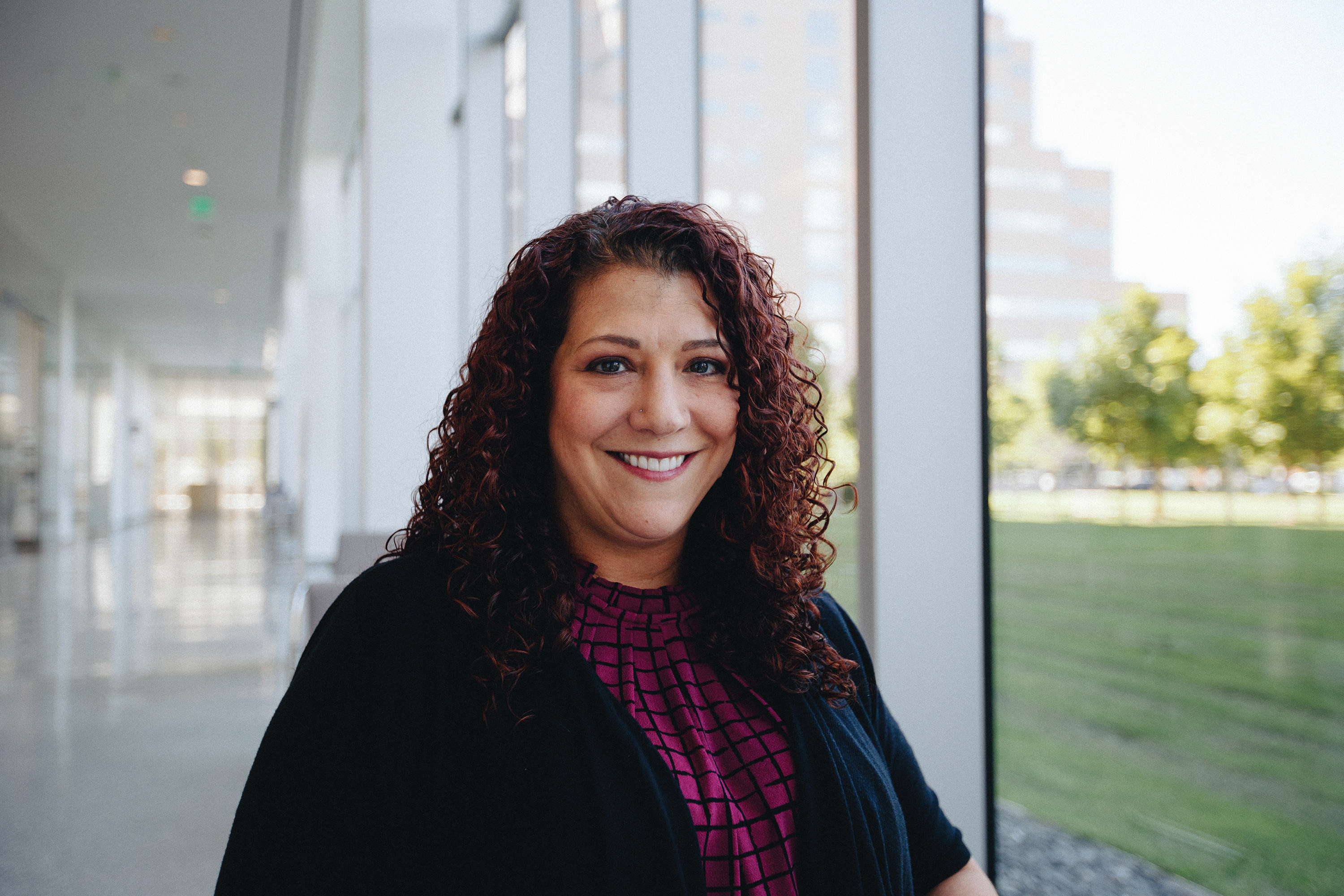Patient-Centered Care Through the Oncology Care Model
Better care. Smarter spending. Healthier people. Those are the three hallmark goals of the Oncology Care Model (OCM), a value-based payment system developed by the Centers for Medicare and Medicaid Service’s (https://innovation.cms.gov/initiatives/oncology-care) (CMS’s) Center for Innovation.
Since its launch in 2016, nearly 200 practices have piloted the OCM program to measure the impact of financial repayment incentives on access to care, care coordination, and the quality of care for patients with cancer.
OCM’s repayment system encourages a patient-focused model of care: institutions connect patients with the appropriate care they need while avoiding excessive treatments, tests, and interventions that would lead to higher costs without improving quality of care. As central members of the cancer care team, oncology nurses are vital to successful care coordination for their patients and are implementing and sustaining OCM.

What Is OCM?
To embrace OCM’s value focus, oncology providers in participating institutions must understand the payment system’s purpose, ONS member Georgina Rodgers, BSN, RN, OCN®, NE-BC, director of clinical cancer services with Cleveland Clinic’s Taussig Cancer Institute in Ohio and member of the Cleveland ONS Chapter, says.
“OCM is a five-year pilot program that continues through June 2021. It’s an alternative payment model that requires practices to reduce overall cost of care while improving quality,” Rodgers says. “Institutions must meet certain clinical practice requirements in exchange for Monthly Enhanced Oncology Service (MEOS) payments and additional requirements to qualify for a performance-based payment.”
ONS member Diona Lumani, PhD, RN, OCN®, nurse manager at Mount Sinai Health System in New York, NY, and member of the Southwestern Connecticut ONS Chapter, cited OCM’s ultimate goal—provide high-quality, patient-centered cancer care without driving up costs.

“OCM is the first CMS bundled payment program for oncology,” Lumani says. “The overarching goal is to provide higher quality, more coordinated care to patients with cancer at a reduced cost to Medicare.”
To develop the necessary clinical requirements and benchmarks, CMS looked at past practice data to understand how it would measure quality care and deliver performance-based payments.
“CMS took historical data to set a benchmark and a 4% discount target amount. If practices beat the target by exceeding the 4% discount on their actual expenditures and are successful in their quality performance, they can achieve a performance-based payment,” Rodgers says. “The overall program has nine performance periods, and a patient episode starts at the initiation of chemotherapy, with each episode running for six months. Each patient on an episode triggers a MEOS payment to the clinical practice of $160 per member per month.”
Nursing’s Role in OCM
Rodgers also emphasized the importance of care coordination and the large role that nurses have in successful care for their patients.
“I firmly believe that nursing, specifically care coordination, is one of the most important roles in OCM. We built our model of care around the patient with the RN specialty care coordinator as the central force that facilitates linkages to other services and ensures appropriate communication during transitions of care, overall coordination of appointments, and partnering with internal and external agencies and support services,” Rodgers says. “The nurse’s role is such a key component of the patient experience and quality through the education they provide, their proactive outreach, and the connections they forge with patients as their personal navigators throughout the cancer journey.”
Lumani, along with colleagues Toby Bressler, PhD, RN, OCN®, Karen DeVries, RN, OCN®, CBCN®, Treasure Dooker, RN, Mark Liu, BS, and Alaysia Williams, developed a study (https://ons.confex.com/ons/2019/gen/eposter.cgi?eposterid=513) to understand nursing’s integral role in care coordination for the OCM. At the frontlines, nurses are responsible for identifying and delivering effective, value-based interventions.
“Nurses are involved with patient-centered, value-based care now more than ever before. Nurses are leading patient-sensitive OCM requirements—quality measures—like medication reconciliation, and pain score, and they ultimately work to implement a plan for pain management,” Lumani says. “For our institution, evaluation for pain score increased from 94% in 2017 to 97% in 2018, and plan for care for pain increased from 13% in 2017 to 82% in 2018.”
According to Lumani and her team’s findings, oncology nurses are key members of the care team and have a significant impact on adherence to clinical quality metrics, especially those required for OCM.
OCM’s Benefits
Through OCM’s focus on value-based interventions—along with the additional payments for hitting specific benchmarks—Rodgers and her institution built up the necessary elements to continue and sustain further value-based care efforts.
“The most obvious benefit is the revenue from the monthly MEOS payments, which allowed us to build up the existing infrastructure of employees to support the programs and initiatives that we initiated. We used MEOS payments to enhance care coordination, financial navigation, social work services, advanced practice providers, pharmacy services, and quality data analytics,” Rodgers says. “The program’s structure and required quality metrics helped us to become laser focused on the development of new and innovative ways that we could look at overall cost and quality of care for our patients.”
Lumani and her team noted the importance of helping patients navigate their care journey. Implementing value-based care—rather than simple fee-for-service—placed a greater emphasis on coordinated care.
“OCM’s biggest benefit is that it provides coordinated care to patients and their family members,” Lumani stresses. “OCM aims to help patients along the way, connecting them with services and specialists that are going to be best for them—making sure that they have access to them—but not putting them through unnecessary procedures or visits that won’t improve the quality of the care they receive for their diagnosis.”
Initial Outcomes and Early Challenges
Although OCM is still being piloted, some initial or anecdotal outcomes are coming to light.
“It has been a positive experience overall, and it is absolutely moving our focus to value, quality, and outcomes. We have seen decreases in hospital admissions and emergency department use over time. We have worked closely with our physicians to evaluate all of our treatment plans to determine the most efficacious and cost effective treatments and supportive care plans,” Rodgers says. “Additionally, our financial navigation team has been able to connect patients to organizations that can assist with household utilities, childcare concerns, food concerns, and mortgages. This has helped the healthcare team and patients to identify ways to mitigate the costs of care and distress related to financial concerns.”
However, providers are still sorting through some complexities. Lumani and Rodgers both cite difficulties managing data from the electronic health record.
“The biggest challenge we’ve faced is related to collecting data,” Lumani said. “At our institution, we treat some patients not diagnosed with cancer, so when we generate a list of patients in the system, it doesn’t always identify the correct patients with cancer. That can be a challenge for reporting, and we’ve really had to ensure data accuracy. In other cases, we did a medication reconciliation that the system didn’t recognize, and we had to deal with that issue.”
CMS’s early data for OCM outcomes is limited. The agency’s initial reports suggest that the OCM is achieving some level of savings. However, more data are needed to determine whether the cost savings are enough to cover the financial incentives—MEOS and performance-based payments—for participating institutions (https://innovation.cms.gov/Files/reports/ocm-secondannualeval-pp1-fg.pdf).
The Future of OCM and Alternative Payment Models
Lumani emphasizes the importance of tackling changes as a team. With buy-in from everyone, any changes for an alternative payment model can be handled quickly and effectively.
“Once there’s a team and a process, OCM’s changes are pretty simple to navigate in practice. And having nurses who are engaged is really important. They’re the ones who are pushing this forward with providers,” Lumani says.
As OCM continues its pilot through 2021, Rodgers says that one thing is certain: new payment models will continue to emerge to address the rising costs of health care.
“This is just the tip of the iceberg when it comes to value-based care and alternative payment models. It will be important for practices to engage with payers and key oncology action groups as insurance companies are also attempting to develop their own unique models,” Rodgers says. “Some have overlapping metrics and others have completely unique metrics that, if required to participate in, would make it quite complex and difficult to manage. Ultimately, nurses will be key to making those systems work.”
